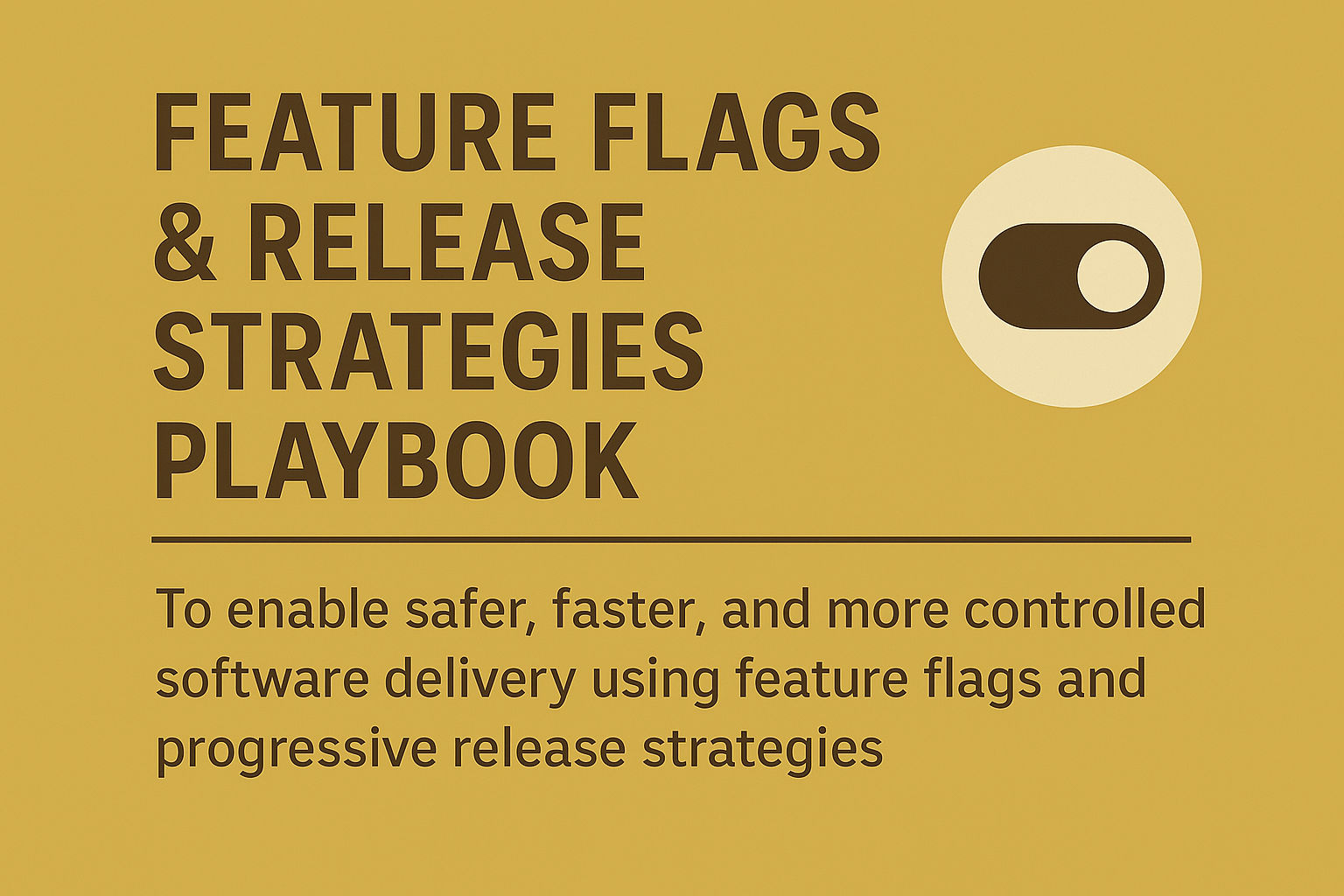Playbook : Feature Flags & Release Strategies Playbook

🌍 Purpose
To enable safer, faster, and more controlled software delivery using feature flags and progressive release strategies. This playbook helps teams decouple deployment from release, reduce risk, and iterate based on real user feedback.
⚖️ Principles
- Deploy != Release: code can be in production but hidden
- Default to progressive, testable release strategies
- Reduce blast radius through gradual exposure
- Use flags for outcomes, not just toggles
- Clean up flags to maintain code health
✅ What Good Looks Like
- Features are deployed behind flags and enabled safely
- Rollouts are gradual and observable
- Teams use flags for experimentation, segmentation, and fallback
- Flags are named and scoped clearly, with ownership
- Technical debt from old flags is managed proactively
🚦 Feature Flag Use Cases
- Progressive Delivery: Canary, ring, or staged rollouts
- Kill Switches: Instantly disable risky or broken features
- Experiments: A/B or multivariate testing
- User Segmentation: Enable based on roles, geography, or account tier
- Decoupled Deploy & Release: Pre-merge, pre-launch testing in production
🎯 Release Strategy Options
1. Toggle (On/Off)
- Quick gating of risky functionality
- Ideal for kill switches and incremental enablement
2. Percentage Rollouts
- Gradual exposure (e.g., 10% → 50% → 100%)
- Reduces blast radius and allows rollback
3. User Targeting
- Enable by user ID, geography, segment
- Supports internal testing and VIP previews
4. Canary Releases
- Release to a subset of servers/environments
- Validate system-level behaviour before full rollout
5. Dark Launches
- Deploy behind-the-scenes without user impact
- Useful for performance testing, data collection
🛠 Best Practices for Managing Feature Flags
- Name Consistently: Use prefixes for purpose (e.g.,
exp_,kill_,beta_) - Define Ownership: Teams must own flag lifecycle and rollout plan
- Track Status: Use tooling to see which flags are active, staged, or stale
- Automate Cleanup: Set expiry dates or review flags in retros
- Monitor Impact: Combine with observability to watch flag-triggered changes
- Avoid Nested Logic: Keep flags simple and well-scoped
🧪 Feature Validation and Observability
- Link flags to dashboards for behavioural metrics
- Compare metrics across flag states (conversion, errors, latency)
- Use logging/tracing to track flag effects in real time
🔧 Tools & Platforms
- Feature Flagging: LaunchDarkly, Unleash, Split.io, Flipper
- Observability: Datadog, Grafana, Honeycomb
- Experimentation: Optimizely, Google Optimize, in-house tools
- CI/CD: GitHub Actions, GitLab CI, CircleCI
📊 Metrics to Monitor
- Deployment frequency and flag usage rate
- Rollback count or time to rollback
- Experiment conversion or lift from flag variations
- Time to retire flags after full rollout
🔐 Governance Link
This playbook supports:
- Policy: Automate Everything, Secure by Design, Outcome-Driven Development
- Standards: Enable Safe, Fast Deployments, Embed Real-Time Observability, Validate Features Through Experimentation, Deliver Quality as a Non-Negotiable Standard
📚 Further Reading
- "Progressive Delivery" – James Governor (RedMonk)
- "Release It!" – Michael Nygard
- LaunchDarkly and Unleash Docs & Best Practices
- "Feature Management Done Right" – Martin Fowler
- "Trunk-Based Development" – trunkbaseddevelopment.com